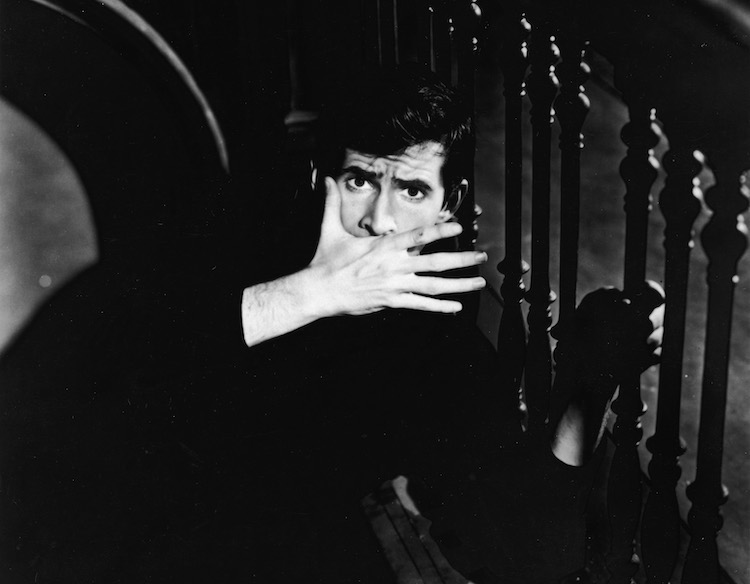How Alfred Hitchcock’s “Psycho” Changed The Horror Genre
Alfred Hitchcock’s 1960 film Psycho heralded a new age of fright flicks. The figure of Norman Bates, played by Anthony Perkins, became one of the most recognizable in cinema history, and Janet Leigh’s role as the first screaming victim of a slasher villain earned her a place in horror film legend. Thanks to the audacity of Hitchcock’s taboo-breaking classic, psychological horror has since become a pillar of scary movies.
Hitchcock Was No Rookie
Psycho wasn’t Hitchcock’s first film by any means. After the success of Vertigo and North by Northwest, he presented Paramount with the concept. The company just didn’t believe audiences would enjoy the film, even though he had been making successes for more than 35 years that were based on unusual character studies.
Hitchcock was so convinced of the story’s potential that he produced the picture with his cash and overcame the financial difficulties to create one of his most creative works.

Ed Gein
Ed Gein, a killer and corpse thief who operated in Texas in the 1940s and 1950s, served as the inspiration for Norman Bates, the frightening figure at the center of the film Psycho. Gein’s home was filled with human remains, some of which had been transformed into furniture or clothes when he was captured in 1957.
In 1945, Gein’s mother passed away, leaving him grieving and alone. He would tell the police that he frequently invaded the graves of recently deceased ladies who resembled his late mother while in a trance-like state and took their bodies back to his home.
Paramount Was Not On Board
Hitchcock privately bid on the film rights and won them for $9,500, despite Paramount’s refusal to produce the movie. When Hitchcock returned to the studio, he encountered the same resistance as previously. Paramount wanted Hitchcock to film another one of his thrillers with a cast full of A-list celebrities because they thought the novel was “too disgusting.” Hitchcock declined.

The Success
Hollywood censors and Paramount Studios were opponents that Hitchcock defeated. He produced a picture that was exactly how he had imagined it would be, and the hype surrounding it was evident. There were several posters portraying Janet Leigh wearing her bra and they were widely circulated at the time.
Hitchcock made a point of not allowing viewers in after the film had started, putting up posters and signage to foster respect for the movie:
“Surely you do not have your meat course after your dessert at dinner. You will therefore understand why we are so insistent that you enjoy PSYCHO from start to finish, exactly as we intended it to be served.”

Pay Cuts
Hitchcock wasn’t against having stars in his movies; he admired the influence an A-list actor could have on viewers. However, because of Psycho‘s limited resources, he wasn’t precisely able to cast Audrey Hepburn and Jimmy Stewart. Instead, he paid Janet Leigh $25,000, which is only a quarter of her usual salary, to play Marion Crane. She was fresh off of the success of Touch of Evil and Who Was That Lady.
The ideal actor to play Norman Bates was Anthony Perkins, who was already well-recognized for his parts in Friendly Persuasion and Fear Strikes Out. Perkins got a salary of $40,000 for the part, which was not a bad sum of money but was less than a celebrity would typically earn for acting in an Alfred Hitchcock and Paramount movie. Everyone involved in the production of the movie knew that something remarkable was taking place, and they all wanted to be a part of it.
The Psycho Success Continued
After having its New York debut on June 16, 1960, Psycho became Hitchcock’s biggest success. The movie received mixed reviews at the time, but it made little difference. On an $800,000 budget, the movie had earned $50 million by the time it finished its theatrical run; when adjusted for inflation, that amounts to about $500 million today. He made $15 million from the movie’s box office because he owned 60% of it, and business is still booming for the movie.
Some of the greatest pieces of art created went through countless obstacles, and Psycho is no exception. Hitchcock knew this film needed to be seen by the world and that the negativity surrounding it would be worth the pushback. Today, Psycho is a cult classic, a masterclass, and a standard to follow.

